Edensor
OS Grid ref:- SK251700
The charmimg Peak District village of Edensor, which is pronounced "Ensor", is the closest village to magnificent Chatsworth House and much of it belongs to the Dukes of Devonshire.
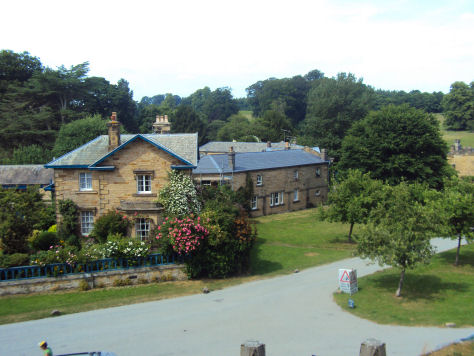
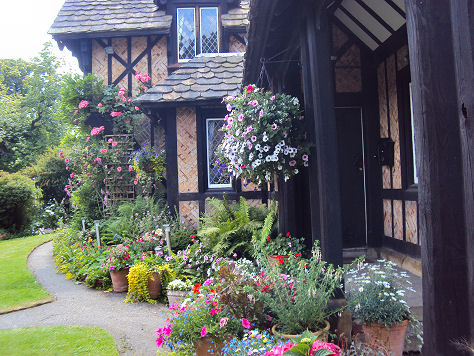
Originally the village stood close to the River Derwent, below Chatsworth, but the Dukes of Devonshire had it moved out of sight over a hill, as it 'spoilt' the view from the house.
Most of the buildings in Edensor are from individual designs from around 1840 by the Derbyshire architect John Robertson. It is said that so many designs for the houses of the proposed village were submitted to the Duke that he could not decide which to select and so had a house built in each of the design styles. There is a Swiss cottage, a Norman House, a Tudor cottage (pictured right) an Italianate villa and many others. Only one of the original houses remains standing, known as Naboth’s Vineyard, as the owner refusal to be relocated by the duke.
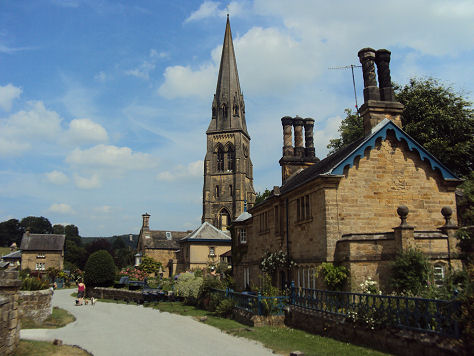
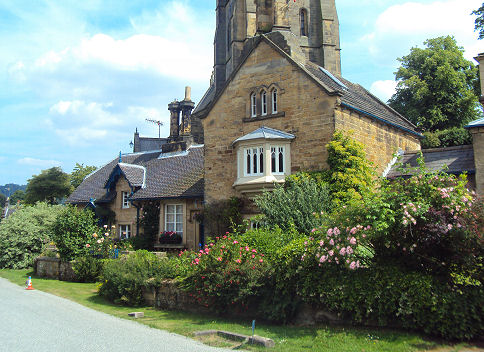
Cavendish Hall, a red-brick Georgian mansion which stands alongside the main estate road, was originally designed as an inn, but it became the village institute and now serves as the Chatsworth Estate Office. Tudor Cottage, which stands on the opposite side of the road, is the most picturesque building on the Chatsworth estate. Designed by Jeffry Wyatville, it features decorative bargeboards and half-timbering with brick infilling. The Edensor Tea Cottage and Licensed Café serve fresh homemade food using locally sourced produce, light meals cakes and refreshments.
The village church of St Peter's was constructed in 1867 for the 7th Duke of Devonshire by Sir Gilbert Scott. Many portions of the earlier church were incorporated into it including the Norman doorway. The Cavendish Chapel contains a magnificent early seventeenth century memorial to Henry and William Cavendish, the sons of the famous Bess of Hardwick.
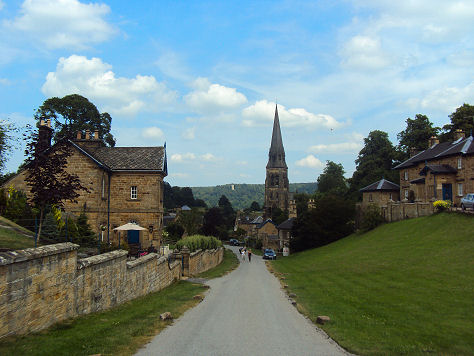
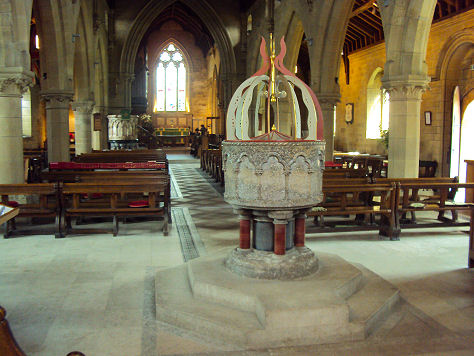
The chapel also contains a wreath of everlasting flowers sent by Queen Victoria as a tribute to Lord Frederick Cavendish, Chief Secretary for Ireland, who was murdered in Dublin in 1882. In the chancel is a monumental brass to John Beton of Authmuthie , Fife, who was the servant of Mary, Queen of Scots, he helped the ill fated Queen to escape when she was imprisoned by the Scottish lords at Loch Leven Castle. He followed her into England and served Mary during her captivity at Chatsworth until his death in 1570.
Sir Joseph Paxton lies buried in the churchyard, he was the 6th Duke's head gardener and helped to design the village. At the top of the churchyard are the tombs of the Dukes of Devonshire and their families, including U.S. President John F. Kennedy's sister Kathleen Kennedy (1920-1948), who was married to the 10th Duke's eldest son and heir and was killed in an aircraft crash. Her husband, William Cavendish, Marquis of Hartington (1917-1944) was killed in action in Belgium during the Second World War. President Kennedy visited her grave in 1963 shortly before his own death.
Nearby places of interest
Chatsworth House known as "The Palace of the Peak" is the country seat of the Duke of Devonshire and is situated on the banks of the River Derwent, 3.5 miles to the northeast of Bakewell in the heart of the Peak District National Park.
Haddon Hall near Bakewell, is an architectural gem. Dating back to the eleventh century, the hall has been described as "the most complete and most interesting house of [its] period", it is the finest example of a medieval manor house currently in existence in England.
